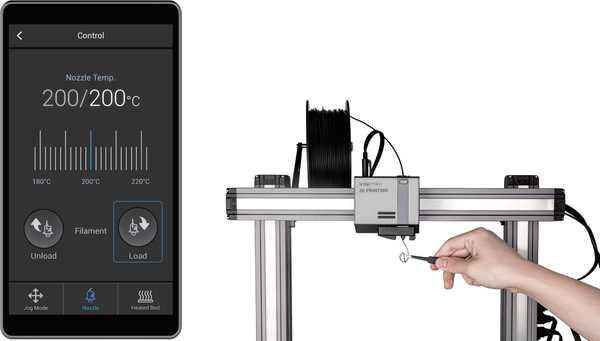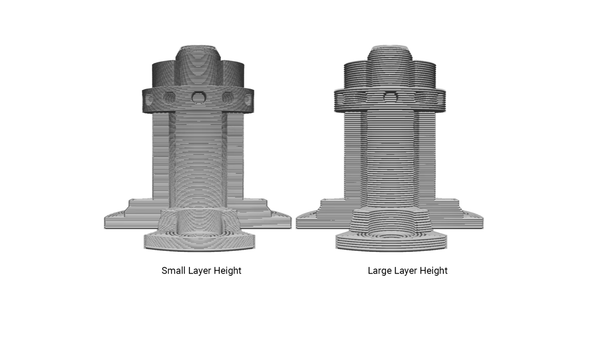Is Printing PETG Indoors Safe?

PETG is one of the most popular 3D printing filaments in the world, prized for its unique combination of strength, flexibility, and ease of use. But as with any process that involves heating materials, a crucial question arises for every user: is it actually safe to print with PETG indoors?
The short answer is yes, with some simple best practices. While 3D printing, in general, involves considerations about odors and emissions, this guide focuses specifically on PETG. We'll explore the science and provide actionable steps for a safe and optimal printing environment.
PETG Is Safe to Print Indoors With Right Precautions
For those looking for a quick answer, you can rest assured that PETG is considered one of the safest materials for indoor 3D printing. It does not produce the strong, unpleasant odors associated with other materials like ABS, making it an excellent choice for projects printed at home or in the office.
The key to a great setup lies in understanding and managing the universal byproducts of 3D printing: Ultrafine Particles (UFPs) and Volatile Organic Compounds (VOCs). Thinking about these is less about risk and more about smart workshop practice.

What Scientific Studies Reveal About Emissions
It’s helpful to look past what our noses can detect and see what scientific research says about emissions. Factors like the brand of filament, printing temperature, and print speed can all be factors in the emission profile.
The Invisible Consideration: Ultrafine Particles (UFPs)
Like many common household activities from cooking on a gas stove to lighting a candle, 3D printing produces what are known as Ultrafine Particles (UFPs). While UFPs are a normal part of any indoor environment, the long duration of many 3D prints makes managing the air quality in your workspace a smart practice. Thinking about this is less about immediate risk and more about good, long-term workshop hygiene. The potential effects of these particles on human health is why simple air management is a good idea.
The Chemical Story: Volatile Organic Compounds (VOCs)
Volatile Organic Compounds are chemicals that can be released as gasses. While PETG is praised for having very low VOCs, scientific analysis confirms it releases them at very low, but measurable, levels. Research has identified compounds like ethylbenzene, toluene, and xylene in PETG emissions. This simply shows that different materials have different emission profiles, which is why good ventilation is always a helpful first step.
PETG vs. Other Filaments: Which Filaments Are Safe to Print Indoors?
Most modern 3D printers can handle a wide range of materials. Let's compare the safety profiles of the most common filaments to help you choose the right one for your project and workspace.
How to 3D Print Safely: From Good to Best
You can significantly improve your indoor air quality by choosing a safety setup that fits your space and printing frequency. Here is a tiered approach from basic measures to a complete solution, aligned with safety recommendations.

Tier 1 (Good): Basic Ventilation
This is the simplest best practice for any 3D printing. Placing your printer in a room with good airflow, especially with an open window or a fan, helps to circulate air and maintain a fresh environment during printing.
Tier 2 (Better): Containing the Emissions
The next significant step is to use a dedicated enclosure to manage the printing environment. An enclosure designed for your printer, like the Enclosure, is a great example. It effectively contains emissions while also providing the added benefit of stabilizing print temperatures, which improves print quality.
Tier 3 (Best): Active Air Filtration
For the most optimized setup and complete peace of mind, pairing an enclosure with an active air filtration system is the gold standard. This creates a robust system for managing your air quality. For instance, the Snapmaker Air Purifier integrates with the enclosure to capture both UFPs and VOCs using a specialized filter, cleaning the air directly at the source. To maintain performance, these systems use replaceable filters, such as a Filter Cartridge, which should be changed periodically.
The Bottom Line
PETG is an excellent and safe material choice for any informed 3D printing enthusiast. Its strength, durability, and favorable emission profile make it a reliable workhorse for countless projects.
By understanding your materials and leveraging the right tools—from an open window to a full enclosure and filtration system—you can create an optimal environment and focus on what matters most: bringing your ideas to life.




